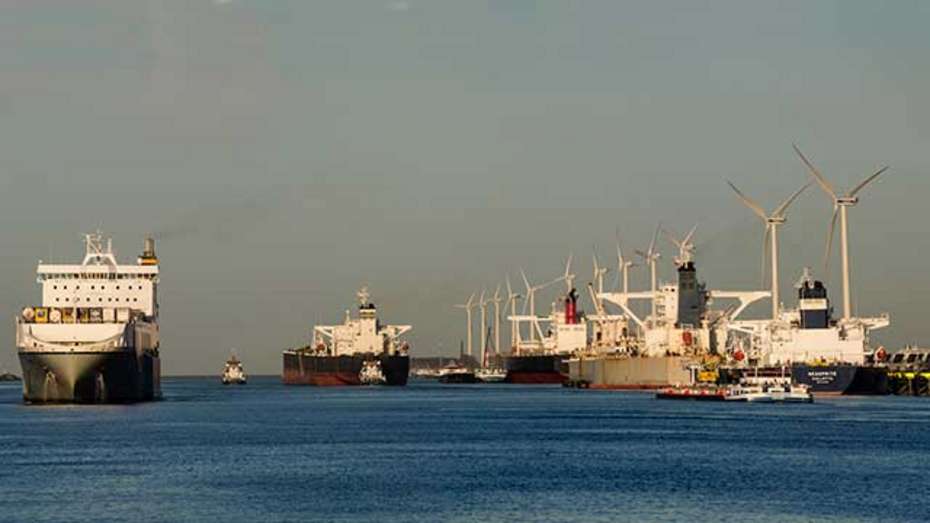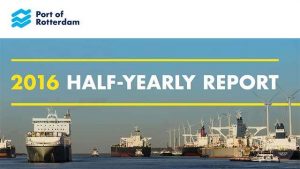
Compared to the exceptionally good first halfof 2015 (when throughput increased by 6.8%), Rotterdam handled 3.0% less cargo in the first six months of 2016. The most pronounced decrease could be observed in the dry bulk segment (-9.9%). Although the port handled a slightly lower volume of liquid bulk (-1.1%), the volume of crude oil and oil products put through so far in 2016 is still at an historical high. The port’s container throughput (in TEU) decreased by 2.3%. While Rotterdam’s offshore sector realized a number of large-scale projects, this industry has been negatively affected by lower investments in oil and gas extraction.
Rotterdam’s market share in the Hamburg-Le Havre range increased from 38.0% in the first quarter of 2015 to 38.3% in the first quarter of 2016. Overall this means that, given the current difficult macro-economic circumstances, Rotterdam’s port business community is performing well compared to companies in competing ports.
Turnover in the first half of 2016 equaled €336.9 million, a €2.0 million decrease compared to the first six months of 2015. Sea port tariffs decreased by €5.8 million, which is mainly attributable to reduced throughput figures. Income from contracts increased by €4.5 million. Net result in the first six months of 2016 totaled €96.6 million, compared to €122.5 million in 2015. This difference can be attributed almost entirely to a one-time payment in connection with the partial cancellation of an interest rate swap. While this increased the Port Authority’s financial expenses in 2016 by €29.3 million compared to 2015, it will result in lower interest charges in the years ahead. Investments for the full year 2016 are expected to be virtually equal to those made in 2015.


